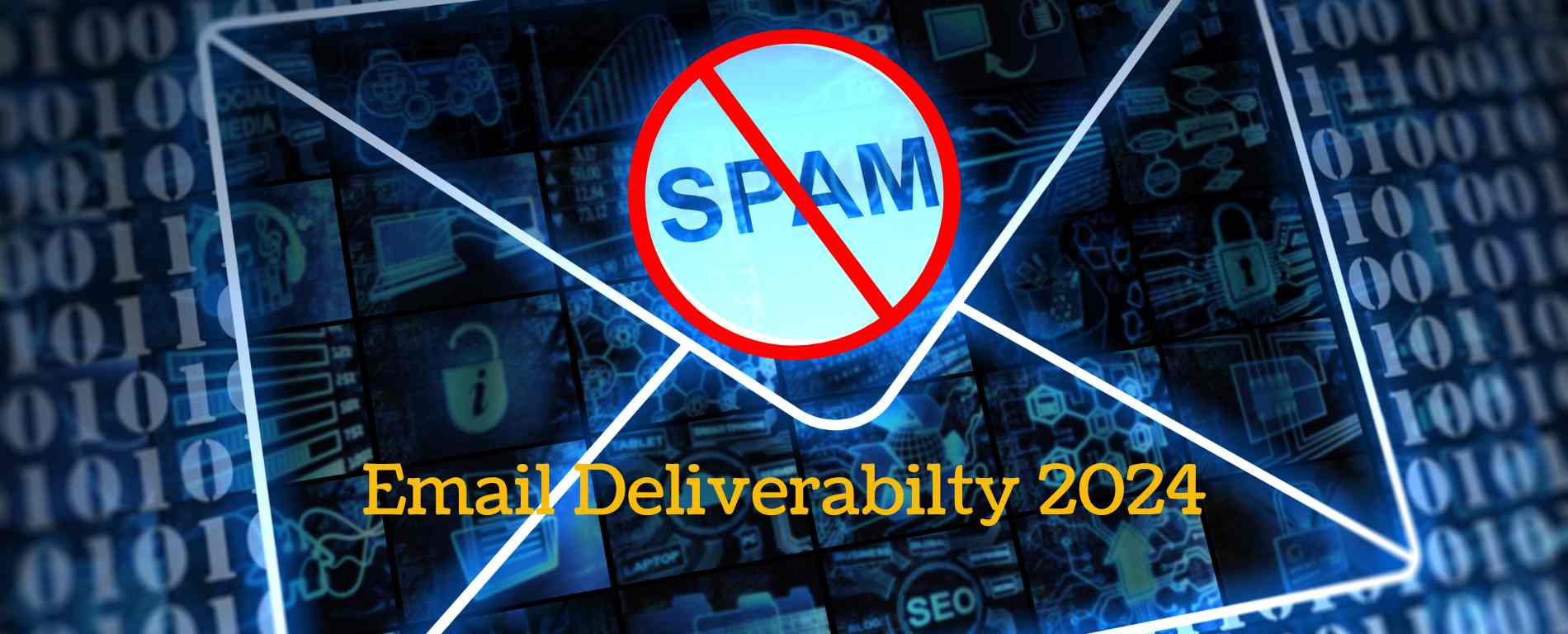Kia ora,
To succeed in email marketing in New Zealand, it’s crucial to understand and follow the latest deliverability guidelines. The main goal is to reach your subscribers’ inboxes smoothly, an essential step in building your audience. Given the dynamic nature of email marketing standards, influenced by changes in consumer behavior, industry rules, and evolving email service requirements, staying informed and adapting to these guidelines is key.
Gmail and Yahoo have made significant announcements regarding forthcoming updates slated for early 2024, regarding email deliverability. Lets take a look at The specifics of the email deliverability changes unveiled by Google and Yahoo for the year 2024.
To succeed in email marketing in New Zealand, it’s crucial to understand and follow the latest deliverability guidelines. The main goal is to reach your subscribers’ inboxes smoothly, an essential step in building your audience. Given the dynamic nature of email marketing standards, influenced by changes in consumer behavior, industry rules, and evolving email service requirements, staying informed and adapting to these guidelines is key.
- The underlying rationale propelling these alterations.
- A comprehensive analysis of the potential ramifications on marketers.
- The intrinsic significance of email deliverability and the meticulous curation of email lists.
- A detailed roadmap comprising four crucial preparatory steps for the impending email deliverability changes in 2024.
- A discerning exploration into how Braze, as an email marketing platform, is actively contributing to fortifying the landscape of deliverability.
At the core is the imposition of new measures by Google and Yahoo, directed towards bulk senders. The objective is to fortify email as a conduit that is not only safe and secure but also fosters an enriching experience for end-users.
As of the early months of 2024, companies engaging in substantial bulk email dissemination to Yahoo and Google users are mandated to:
- Undertake authentication of their emails: Leveraging advanced email authentication methods such as SPF, DKIM, and DMARC becomes imperative to thwart fraudulent practices and bolster trust.
- Streamline the unsubscribe process: Bulk senders are obligated to furnish subscribers with a one-click option to opt out directly within email campaigns, thereby simplifying the disengagement process.
- Promptly process and honor unsubscribe requests within a two-day timeframe.
- Abide by predetermined spam rate thresholds to safeguard users from unwarranted or irrelevant messages.
The impetus behind these stringent requirements from Google and Yahoo is rooted in their collective vision to elevate the email experience for users. The overarching goal is to curtail the inundation of unwanted emails, ensuring that individuals receive only the content they genuinely desire and are willing to engage with.
The impact of these changes means a change to best email practices. While companies adhering to these practices may require minimal adjustments, those falling short risk a spectrum of consequences, including heightened bounce rates, delayed deliveries, and potential relegation to spam folders. Google explicitly outlines the potential rejection or spam folder placement of a brand’s emails in the case of non-compliance.
Understanding the pivotal role of email deliverability and list hygiene in this context is imperative. Email, as a potent channel, offers a substantial return on investment, and success hinges on fostering positive engagement and nurturing a robust sender reputation. These principles are further underscored by the evolving standards set by Gmail and Yahoo, emphasizing the importance of targeting engaged audiences and maintaining a healthy email list.
In preparation for the impending sender guidelines in 2024, a proactive stance is recommended. Keeping abreast of changes and implementing necessary adjustments is paramount to ensure seamless compliance.
In conclusion, the introduction of these new deliverability requirements by Google and Yahoo signifies a collective commitment to uphold consistent standards of excellence for all email senders. Adherence to these measures not only benefits marketers dedicated to cultivating meaningful customer relationships but also positions brand messages to stand out in liberated inboxes. To delve deeper into these changes and facilitate adaptation strategies, we invite you to join our upcoming webinar on January 9, 2024, where we guide marketers through compliance with Google’s and Yahoo’s updated bulk sender requirements.
Contact Web8 for more information. Click Here to make an appointment
FAQs
When do the new email deliverability requirements go into effect?
- Yahoo’s requirements commence in February 2024, while Gmail’s rules take effect on February 1, 2024. Compliance with the one-click unsubscribe requirement is expected by June 1, 2024.
What are some key bulk sender requirements introduced by Google and Yahoo for 2024?
- Bulk senders must authenticate emails, offer one-click unsubscribes, honor unsubscribe requests within two days, and maintain spam rates below 0.3%.
What email authentication methods will Google and Yahoo require bulk senders to implement in 2024?
- Both providers mandate the use of SPF, DKIM, and DMARC for email authentication.
What might happen if bulk senders fail to meet these new requirements from Yahoo and Google?
- Consequences include increased bounce rates, delayed deliveries, email communications being filtered to bulk/junk folders, decreased sender reputation, and diminished email performance, encompassing opens, clicks, and conversions.
How is a bulk sender defined
- A bulk sender is any email sender that sends close to 5,000 messages or more to personal Gmail accounts within a 24-hour period. Messages sent from the same primary domain count toward the 5,000 limit.
- Sending domains: When they calculate the 5,000-message limit, they count all messages sent from the same primary domain. For example, every day you send 2,500 messages from solarmora.com and 2,500 messages from promotions.solarmora.com to personal Gmail accounts. You’re considered a bulk sender because all 5,000 messages were sent from the same primary domain: solarmora.com.
- Senders who meet the above criteria at least once are permanently considered bulk senders.
In Conclusion
The changes announced by global players like Gmail and Yahoo underscore the need for proactive measures. The outlined requirements for bulk senders in 2024, emphasizing authentication, streamlined unsubscribing, prompt response to unsubscribe requests, and maintaining spam rates within defined thresholds, serve as a testament to the industry’s commitment to enhancing user experience.
For marketers, the implications are clear – compliance with these evolving standards is not just a matter of meeting regulatory requirements but a strategic imperative. Brands that proactively embrace these changes and align their practices with best email marketing principles are poised not only to comply with the new guidelines but also to stand out in liberated inboxes, fostering meaningful customer relationships.
Download our Infographic on this here




